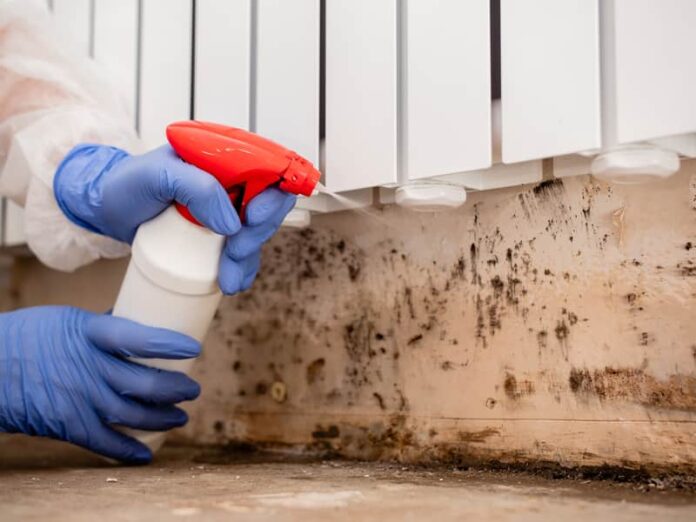Mold can be a silent intruder in homes, lurking in hidden corners and behind walls, often going unnoticed until it becomes a significant issue. Understanding the importance of thorough mold inspection columbus ohio services for your home can help you maintain a safe and healthy living environment. In this blog post, we will explore what mold is, why it’s essential to conduct regular inspections, the process involved in mold inspections, and how to choose the right service for your needs.
Understanding Mold
What is Mold?
Mold is a type of fungus that thrives in damp and humid environments. It reproduces through tiny spores that can be easily carried through the air. While some molds are harmless, others can produce allergens and irritants, which may lead to health problems, especially for those with respiratory conditions or weakened immune systems.
How Does Mold Grow?
Mold typically requires three elements to grow: moisture, organic material, and a suitable temperature. Common sources of moisture in homes include:
- Leaky roofs and plumbing: Water from leaks can create a perfect breeding ground for mold.
- High humidity: Areas with poor ventilation, like basements and bathrooms, can accumulate humidity.
- Flooding: Water damage from flooding can lead to mold growth if not addressed promptly.
The Importance of Mold Inspections
Protecting Your Health
Conducting regular mold inspections is crucial for maintaining a healthy home. Mold can cause various health issues, such as:
- Respiratory problems
- Allergic reactions
- Skin irritation
- Fatigue and headaches
By identifying mold issues early through a thorough inspection, you can mitigate these health risks.
Preserving Your Home’s Structure
Mold doesn’t just affect health; it can also compromise the structural integrity of your home. Mold can weaken wood and other building materials, leading to costly repairs. Regular inspections can help catch these issues before they escalate, preserving the value of your home.
The Mold Inspection Process
Initial Assessment
A mold inspection typically begins with an initial assessment of the property. Inspectors look for visible signs of mold and areas prone to moisture, such as:
- Bathrooms
- Kitchens
- Basements
- Around windows and doors
This initial visual inspection sets the stage for further investigation.
Testing and Sampling
If mold is suspected but not visible, inspectors may take samples from the air or surfaces to identify the presence of mold spores. There are two primary types of tests:
- Air Sampling: Air samples can reveal the concentration of mold spores in the environment. High levels may indicate a mold problem, even if no visible mold is present.
- Surface Sampling: This involves collecting samples from surfaces suspected of mold growth. This method helps identify the type of mold present, which can inform remediation efforts.
Identifying Sources of Moisture
A critical part of the mold inspection process is identifying the sources of moisture that may be contributing to mold growth. Inspectors may use moisture meters or thermal imaging cameras to detect hidden moisture behind walls or under floors.
Documentation
After the inspection, a detailed report is typically provided. This report includes:
- Areas inspected
- Findings and observations
- Recommendations for remediation (if necessary)
This documentation is essential for homeowners to understand the extent of any mold issues and the steps needed to address them.
Choosing the Right Mold Inspection Service
Look for Credentials
When searching for mold inspection services, it’s crucial to choose a company with the right credentials. Look for certifications from reputable organizations that specialize in mold inspection and remediation.
Read Reviews and Testimonials
Customer reviews and testimonials can provide insight into the quality of service offered. Look for companies with a strong reputation for thorough inspections and excellent customer service.
Ask About Their Process
Inquire about the inspection process used by potential service providers. A comprehensive approach that includes visual inspections, testing, and moisture assessment is essential for a thorough inspection.
Consider Experience
Experience matters in mold inspections. Companies with a long track record are likely to have encountered a wide range of mold issues and can bring that expertise to your inspection.
DIY vs. Professional Mold Inspections
When to Consider DIY
Some homeowners may consider conducting a DIY mold inspection. While this approach can be cost-effective, it has its limitations. DIY inspections are best for minor mold issues or areas where mold is visibly present.
Benefits of Professional Inspections
Professional mold inspections offer several advantages:
- Thoroughness: Trained inspectors can identify hidden mold issues that may go unnoticed during a DIY inspection.
- Access to Tools: Professionals have access to specialized tools and equipment, such as moisture meters and air sampling kits.
- Expertise: Trained inspectors can accurately identify the type of mold present and recommend appropriate remediation measures.
Conclusion
Regular mold inspections are essential for maintaining a healthy and safe home. By understanding what mold is, the risks it poses, and the importance of thorough inspections, homeowners can take proactive steps to protect their families and properties. Whether you choose to conduct a DIY inspection or hire professionals, ensuring that your home is free of mold will contribute to a healthier living environment.
In conclusion, investing in thorough mold inspection services for your home is an important step in safeguarding your health and preserving your property. With the right approach, you can ensure that your home remains a safe haven, free from the harmful effects of mold. Remember, the key to effective mold management lies in prevention and early detection.



